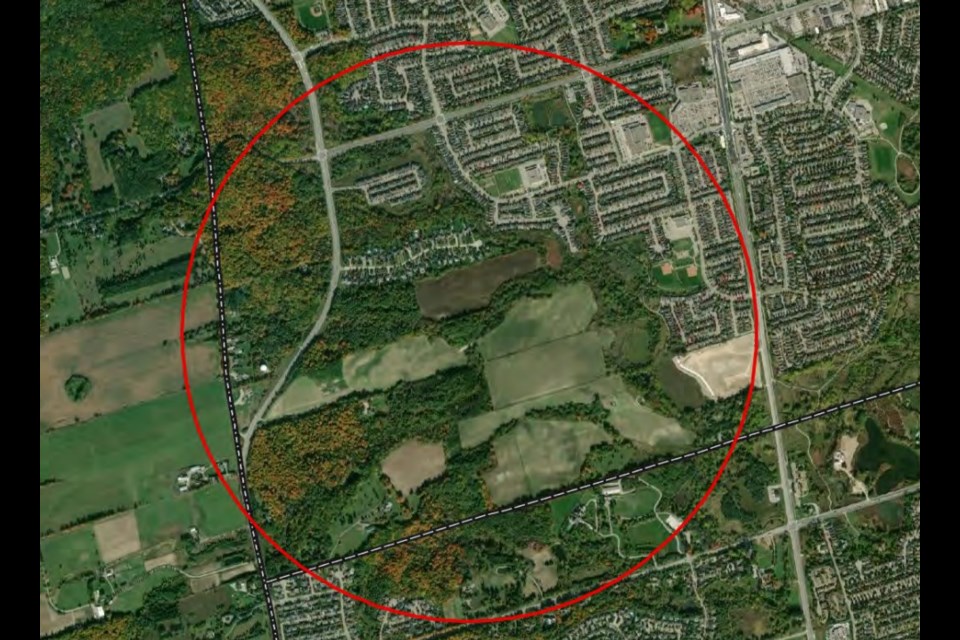Newmarket council has a big decision to make in the next few months about whether or not it wants to roll back some environmental protections in the southwest corner of Newmarket to allow for development to take place there.
This is one of the few remaining undeveloped areas within Newmarket boundaries, and there is already one application from developer Shining Hill Estates, which wants to build a new 155-hectare, multi-purpose subdivision there.
At an online meeting Tuesday, Newmarket councillors met not to discuss the merits of the proposed development, but to learn about the complicated issues that they will need to sift through while deciding whether to allow development in that area of town.
"What we are looking at are the lands between Yonge Street to Bathurst Street and south of existing developments in Newmarket to St. John's Sideroad in Aurora," Jason Unger, assistant director of planning, explained to council.
Just about half of that area of Newmarket is already designated for development. The land being used in the first phase of the Shining Hill Estates project falls within this zone and was approved to begin construction back in March of 2018. The resulting homes from that development are already being sold.
The other half of the area, meanwhile, is part of the Oak Ridges Moraine, a large and ecologically sensitive area protected by provincial regulations governing its use and future development.
After those regulations were put in place, the Town of Newmarket decided in 2003 to go a step further than required and designated most of the moraine lands as an environmental protection area, which has prevented new development there ever since. Now the council will have to decide whether to alter or stand by that decision.
"As we deliberate on what is the future of these lands, there are a number of matters that will need to be considered and evaluated over the coming months," said Unger.
"To what extent does the town want to retain the current approach of having no development in this area? Or is there an interest in potentially protecting what is valuable within the context of some development?
Although the Town of Newmarket chose to make its part of the moraine as an environmentally protected area, the Town of Aurora instead designated its portion as an urban area.
Similarly, in York Region's official plan, most of the area under consideration is designated as an urban zone, including the moraine lands. Although the region also has its own system in place to protect certain areas and natural features.
Another portion of land, known as the white belt, is designated rural; another issue that will need to be addressed before urban development can go ahead. Unger said that is already being reviewed.
Unger also noted other issues beyond environmental protection could factor into the decision to open the area up for development or not.
"We also need to think about housing issues, and to what extent these lands could or should help the town achieve some of its goals related to housing affordability," he said.
Other questions include whether the woodlots could be taken into public ownership and used as trails. Is there enough service capacity to develop the area? And what would the financial impact on the municipality be one way or the other?
Councillor Kelly Broome asked why Newmarket had decided to declare the moraine lands as an environmental protection area while the Aurora and York Region did not.
Unger said he didn't know about Aurora's decision specifically but said the Town of Newmarket had been careful in its treatment of the Oak Ridges Moraine since at least the mid-1990s.
"At that point, it was already a hands-off area. I think there was a recognition that there was an Oak Ridges Moraine in this area, and it serves a function," said Unger.
"There was also a national heritage pilot project that was undertaken by the town ... and it identified this area as a place with some significant woodlots and natural heritage features. So I think that played into it, as well."
Councillor Victor Woodhouse said that council should get public feedback and research best practices from other communities.
"This is a big decision," he said. "I am not opposed to a well-measured response and a well-thought-through decision."
A public meeting will be held in the near future. Shining Hill Estates' application for subsequent phases of their project is complete and will now need to move onto the public consultation phase expected in the early part of 2021.



